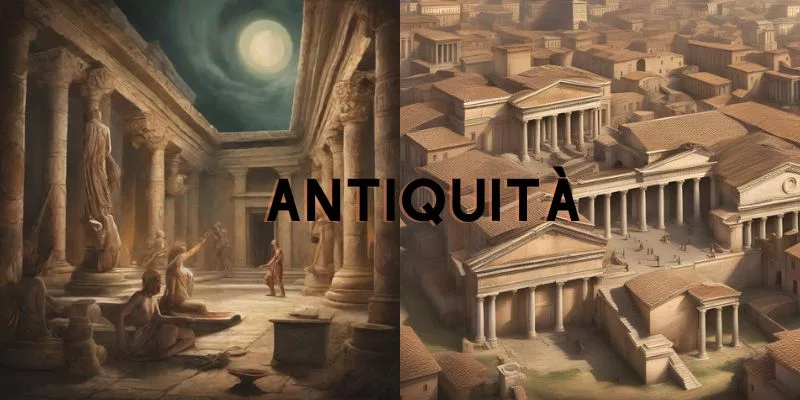A Glimpse into Antiquità: Exploring the Past through

From ancient ruins and artifacts to classical artworks, Antiquità transports us to past civilizations across the ages. But antiquity encompasses diverse realms spanning prehistory to more recent eras across multiple continents. Even defining “antiquity” evokes debate between scholars, governments and those who trade antiquities legally or otherwise. Understanding this diversity is key to both appreciating and protecting our shared human heritage.
Navigating the Diverse Realms of Antiquity
In a broad sense, an “antiquity” refers to objects, monuments and artifacts from ancient history. But determining what constitutes “ancient” varies widely. Western traditions often view Greco-Roman civilizations as the cradle of Western antiquity, while discounting accomplishments of other ancient cultures globally. Expanding definitions of antiquity to include diverse realms challenges Eurocentric biases. The site had over 30 buildings, including palaces, theaters, libraries and spas set among gardens with water features, statuary and more. Today, the enormous ruins allow visitors to explore the villa and envisage its past grandeur.
Protecting Antiquities
Antiquities face modern threats from war, climate change, urbanization, tourism and looting. Extremist groups actively demolish sites that predate or contradict their ideologies. Seasonal flooding endangers waterlogged wooden artifacts while rising temperatures damage antiquities suited for past climates. Expanding cities and infrastructure projects encroach on sites while tourism wears away at ancient monuments. Looting that supplies illegal antiquities trade robs artifacts of context key to understanding lost cultures properly.
The Vatican Museums contain some of the most significant classical antiquities in the world, selected by the Roman Catholic papacy over centuries. From ancient Egyptian artifacts to Renaissance maps, the collections span many civilizations. Especially noteworthy is the massive Belvedere Courtyard and the famous Laocoön sculpture depicting the battle between Laocoön, his sons and sea serpents.
Beyond museums, many churches, palaces and ancient sites around Italy contain valuable antiquities still found in situ. The Pantheon, a former Roman temple that is remarkably intact, features original antiquities alongside Christian additions from its conversion.
Ancient Ruins Preserved and Protected
With so many layers of history, new discoveries still occur regularly in Italy. Modern excavations use the latest technology and archaeology techniques to uncover buried antiquities without damaging existing sites or artifacts. Scientists can now even study human remains to determine factors like diet, disease, ancestry and migration patterns of ancient civilizations.
However, antiquities face threats from pollution, climate change, urbanization and mass tourism. Natural disasters like floods and fires also endanger sites. Strict preservation laws attempt to protect Italy’s cultural heritage and antiquities for future generations. Additionally, technologies like drones and 3D imaging digitally preserve ancient sites.
The past may be long gone, but the antiquities it left behind give us tangible connections to history. Studying antiquities also fuels innovation – ancient Roman concrete engineering intrigues modern architects seeking sustainable building solutions. New analysis techniques reveal secrets that challenge old assumptions about antiquity. Italy’s cultural institutions continue working diligently to maintain, conserve and study antiquities while making them accessible. After all, understanding our shared human history is key to understanding ourselves.
Conclusion
From ancient Roman ruins and classical era sculptures to precious Renaissance paintings, Italy overflows with antiquities. These artifacts allow us glimpses into fascinating past civilizations across millennia, even preserving specific moments like the 79AD destruction of Pompeii. While antiquities face modern threats, strict preservation laws and digital techniques aim to safeguard Italy’s treasures for posterity. Antiquities remain a vibrant, living link between present and past.
FAQs of Antiquità
Q: Where are some of Italy’s most valuable antiquities housed?
A: Many antiquities can be found in situ at historic sites and monuments around Italy. However, major museum collections include the Vatican Museums, the National Archaeological Museum in Naples, and the Uffizi Gallery in Florence. Many churches also contain valuable antiquities.
Q: How are antiquities in Italy being preserved?
A: Strict national heritage laws protect antiquities in Italy, regulating restoration work, excavations, and export. Digital scanning creates 3D models of sites while organizations like the Art Crime division of the Carabinieri police force cracks down on antiquities smuggling and theft. Scientists study preservation challenges like pollution and climate change to protect antiquities.





